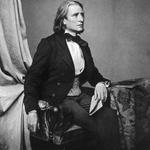
Franz Liszt
Franz (Ferenc) Liszt (1811 - 1886) was a Hungarian composer and one of the most famous pianists ever. He started his musical career very early as a child prodigy, and studied with Antonio Salieri and Carl Czerny in Vienna. He then moved with his family to Paris in 1823, where he studied with composer Anton Reicha.
Liszt was friends with many of the cultural icons of the 19th century, such as composers Hector Berlioz, Richard Wagner and Frédéric Chopin, as well as artist Eugene Delacroix and poet Heinrich Heine. One of the most important meetings in Liszt's early life was his witnessing of the concerts of diabolical violinist Niccoló Paganini, something which is said to have inspired him in his quest to make the piano the supreme virtuosic instrument.
In his young age, Liszt had a relationship with Countess Marie d'Agoult which resulted in three children. His daughter Cosima (born 1837) would go on to marry Wagner, resulting in Liszt becoming Wagner's father in law. Liszt's relationship with d'Agoult eventually ended, and Liszt went on to live with Princess Carolyn Sayn-Wittgenstein, who is sometimes considered an important factor in his decision to focus on composing rather than performing. Be that as it may, Liszt - despite being one of the most celebrated piano virtuosos ever - abandoned the concert stage in 1847, and subsequently only performed seldomly in public (e.g. at charity events and occasionally at classes).
The years that followed are often named the "Weimar years", as Liszt settled in Weimar (where he had previously held a position as musical director) and went on to compose some of his most important masterpieces. These include the Faust Symphony and the symphonic poems - a form which Liszt is credited as having created. During this time he also composed the two piano concerti and Totentanz for piano and orchestra. His support for Wagner during this time, as well as his general avant-garde approach to composition, caused considerable divisions between two schools of music - the futuristic school of Weimar and the more conservative Leipzig school. The latter is most famously represented by Johannes Brahms, Felix Mendelssohn and Robert Schumann.
Around 1860, Liszt settled more or less permanently in Rome, where he took minor orders and became Abbé Liszt. Here his output consisted mainly of religious music, such as the Oratorio Christus and The Legend of St. Elizabeth. The very latest period of Liszt's life resulted in a considerable alteration of his musical style - he abandoned his previous virtuoso style with all its bombast and flashiness in favor of a bleak, stark compositional approach. During his late years, Liszt turned his back on romanticism more or less altogether and pointed the way forward into the atonality of the 20th century. This is particularly surprising considering he was in fact one of the archetypal romantics of his time in his early years.
Liszt composed a great number of piano works, ranging from operatic paraphrases through somewhat avant-garde works which are nonetheless based in classical forms and onwards to experimental" works verging on atonality. While his Sonata in B minor (1853) is often held to be his greatest piano composition, one can mention many works that may be equally or even more deserving of such a title. For instance, the Années de Pèlerinage contain many masterpieces which describe Liszt's impressions from Switzerland and Italy (the latter collection containing the famous "Dante Sonata" and the tarantelle). His Hungarian Rhapsodies, while subsequently criticized by e.g. Bartók as stemming from gipsy traditions rather than true Hungarian folk music, are nonetheless popular concert works with a characteristic mix of melancholy and near-frenzied cheerfulness.
Many of Liszt's most interesting works are cast in the form of etudes. While undoubtedly useful for the purpose of developing technique, Liszt's etudes differ from Chopin's Etudes in that they lack the relentless, one-sided focus on a specific technical aspect that can be seen in the latter. Thus, they are in fact often less taxing with regards to sheer endurance. On the other hand, many Liszt etudes contain concentrated difficulties that often exceed anything found in Chopin's creations. The most important collection, the Études d'exécution transcendante (1851) contains twelve etudes which, besides being of considerable difficulty, often reach extraordinary musical heights. In fact, this set constitutes a revised (and simplified!) version of the rarely heard Douze grandes etudes (1837) - the latter itself stemming from a childhood collection of sketches (from 1826). Another collection of etudes - consisting of the six "paganini etudes" (1851) utilises caprices by the violin virtuoso Niccoló Paganini as thematic basis. An exception is paganini etude no. 3 - the famous "La campanella" - which in fact is based on one of Paganini's violin concertos. The paganini etudes are also preceded by earlier versions (composed in 1838), some of which are extremely difficult. Yet another etude collection - the concert etudes (1848) - consists of Il lamento, La leggierezza and Un sospiro. Liszt also composed two other concert etudes (1862) - Waldesrauschen and Gnomenreigen - as well as an energetic etude called Ab irato (1852) which is based on the earlier Morceau de salon (1840).
On the topic of etudes, Liszt composed many other works in forms that were first propagated by Chopin. These include two Polonaises (1851) - the first of which is unjustly neglected - as well as two Ballades (1848 and 1853) and a Berceuse (1854). Many of his works in waltz form, while very different from e.g. the waltzes of Chopin in their evasion of a traditional waltz rhythm, are great works of art. Here one could obviously mention the famous Mephisto Waltz No. 1 (1859-1862), which is based on a scene (the Dance in the Village Inn) from Lenau's faust. One should also note Valse mélancholique (1839-1850) and Valse-impromptu (1842-1852). Another important dance form for Liszt was the march - as e.g. evidenced by the reasonably well known Scherzo and Marsch (1851), and by the Goethe-Festmarsch (1872).
Many of Liszt's piano works are not original compositions but rather transcriptions of other composers' music. Nonetheless, Liszt generally influences these works to such an extent that they become his own. This is especially true in the case of the operatic paraphrases. A famous example of such paraphrases is the extraordinarily difficult Réminiscences de Don Juan (1841), derived from Mozart' s famous opera, as well as the Réminiscences des Huguenots (1842, based on Meyerbeer), the Réminiscences des Puritains (1836, based on Bellini) and the Réminiscences de Norma (1841, also based on Bellini). As could be expected, Liszt also made arrangements of many Wagner operas, such as Tristan and Isolde (Isoldes Liebestod, 1867). Rossini also caught his attention, as shown by the Soirees musicales (1837, including the famous La danza) as well as his transcription of the Guillame Tell overture (1838). Some Liszt transcriptions are more literal, such as his piano versions of the nine Beethoven symphonies, Bach's organ works and Schubert's song cycles. In these instances, he manages to overcome the inherent restrictions of the piano in most imaginative ways, as to be able to recreate nearly the entire musical palette of the original compositions.
A number of Liszt's piano works are of a profound and serious - one could say almost grim - mood. Some of these have religious connotations, while others rather reflect a world-weariness ranging on resigned apathy and depression. In this category, one could mention the relatively early Harmonies Poétiques et Religieuses (1845-1852), containing the often played Funerailles. However, as mentioned above, this side of Liszt gains considerable more influence during the later years of his life. During this period his piano compositions combine a stark style with harmonic innovations that foreshadow composers such as Debussy, Ravel and Prokofiev. As examples of pieces from this time can be mentioned a third volume of Années de Pèlerinage (1877), containing the impressionistic Les jeux d'eaux a la Villa d'Este. The almost morbid Historical Hungarian Portraits (1885) also belong to this compositional era. However, most of Liszt's older pieces are of an individual kind, rather than belonging to any form of collection. These include the dissonant and violent Unstern! (ca 1880), the oddly somber Nuages gris (1881), as well as many pieces inspired by Wagner's death - La lugubre gondola (1885), RW - Venezia (1883) and Am Grabe Richard Wagners (1883). In his old age, Liszt also revisited the waltz form, in the shape of four Valses Oubliées (1881-1884) and Mephisto Waltzes Nos. 2-4 (1881-1885 - the fourth is incomplete). He also went back to his Hungarian roots through Hungarian Rhapsodies Nos. 16-19 (1882-1885) and shorter pieces such as Ungarns Gott (1881). The Hungarian dance of czardas also caught Liszt's attention. However, his musical contributions in this form, such as Czardas obstinée (1882) and Czardas macabre (1881) must be considered anything other than typical in their ominous relentlessness and clashing harmonies.
- Erik Helling
On tour
Yes
Followers
48,111
Category
Classical
About Franz Liszt
Franz (Ferenc) Liszt (1811 - 1886) was a Hungarian composer and one of the most famous pianists ever. He started his musical career very early as a child prodigy, and studied with Antonio Salieri and Carl Czerny in Vienna. He then moved with his family to Paris in 1823, where he studied with composer Anton Reicha.
Liszt was friends with many of the cultural icons of the 19th century, such as composers Hector Berlioz, Richard Wagner and Frédéric Chopin, as well as artist Eugene Delacroix and poet Heinrich Heine. One of the most important meetings in Liszt's early life was his witnessing of the concerts of diabolical violinist Niccoló Paganini, something which is said to have inspired him in his quest to make the piano the supreme virtuosic instrument.
In his young age, Liszt had a relationship with Countess Marie d'Agoult which resulted in three children. His daughter Cosima (born 1837) would go on to marry Wagner, resulting in Liszt becoming Wagner's father in law. Liszt's relationship with d'Agoult eventually ended, and Liszt went on to live with Princess Carolyn Sayn-Wittgenstein, who is sometimes considered an important factor in his decision to focus on composing rather than performing. Be that as it may, Liszt - despite being one of the most celebrated piano virtuosos ever - abandoned the concert stage in 1847, and subsequently only performed seldomly in public (e.g. at charity events and occasionally at classes).
The years that followed are often named the "Weimar years", as Liszt settled in Weimar (where he had previously held a position as musical director) and went on to compose some of his most important masterpieces. These include the Faust Symphony and the symphonic poems - a form which Liszt is credited as having created. During this time he also composed the two piano concerti and Totentanz for piano and orchestra. His support for Wagner during this time, as well as his general avant-garde approach to composition, caused considerable divisions between two schools of music - the futuristic school of Weimar and the more conservative Leipzig school. The latter is most famously represented by Johannes Brahms, Felix Mendelssohn and Robert Schumann.
Around 1860, Liszt settled more or less permanently in Rome, where he took minor orders and became Abbé Liszt. Here his output consisted mainly of religious music, such as the Oratorio Christus and The Legend of St. Elizabeth. The very latest period of Liszt's life resulted in a considerable alteration of his musical style - he abandoned his previous virtuoso style with all its bombast and flashiness in favor of a bleak, stark compositional approach. During his late years, Liszt turned his back on romanticism more or less altogether and pointed the way forward into the atonality of the 20th century. This is particularly surprising considering he was in fact one of the archetypal romantics of his time in his early years.
Liszt composed a great number of piano works, ranging from operatic paraphrases through somewhat avant-garde works which are nonetheless based in classical forms and onwards to experimental" works verging on atonality. While his Sonata in B minor (1853) is often held to be his greatest piano composition, one can mention many works that may be equally or even more deserving of such a title. For instance, the Années de Pèlerinage contain many masterpieces which describe Liszt's impressions from Switzerland and Italy (the latter collection containing the famous "Dante Sonata" and the tarantelle). His Hungarian Rhapsodies, while subsequently criticized by e.g. Bartók as stemming from gipsy traditions rather than true Hungarian folk music, are nonetheless popular concert works with a characteristic mix of melancholy and near-frenzied cheerfulness.
Many of Liszt's most interesting works are cast in the form of etudes. While undoubtedly useful for the purpose of developing technique, Liszt's etudes differ from Chopin's Etudes in that they lack the relentless, one-sided focus on a specific technical aspect that can be seen in the latter. Thus, they are in fact often less taxing with regards to sheer endurance. On the other hand, many Liszt etudes contain concentrated difficulties that often exceed anything found in Chopin's creations. The most important collection, the Études d'exécution transcendante (1851) contains twelve etudes which, besides being of considerable difficulty, often reach extraordinary musical heights. In fact, this set constitutes a revised (and simplified!) version of the rarely heard Douze grandes etudes (1837) - the latter itself stemming from a childhood collection of sketches (from 1826). Another collection of etudes - consisting of the six "paganini etudes" (1851) utilises caprices by the violin virtuoso Niccoló Paganini as thematic basis. An exception is paganini etude no. 3 - the famous "La campanella" - which in fact is based on one of Paganini's violin concertos. The paganini etudes are also preceded by earlier versions (composed in 1838), some of which are extremely difficult. Yet another etude collection - the concert etudes (1848) - consists of Il lamento, La leggierezza and Un sospiro. Liszt also composed two other concert etudes (1862) - Waldesrauschen and Gnomenreigen - as well as an energetic etude called Ab irato (1852) which is based on the earlier Morceau de salon (1840).
On the topic of etudes, Liszt composed many other works in forms that were first propagated by Chopin. These include two Polonaises (1851) - the first of which is unjustly neglected - as well as two Ballades (1848 and 1853) and a Berceuse (1854). Many of his works in waltz form, while very different from e.g. the waltzes of Chopin in their evasion of a traditional waltz rhythm, are great works of art. Here one could obviously mention the famous Mephisto Waltz No. 1 (1859-1862), which is based on a scene (the Dance in the Village Inn) from Lenau's faust. One should also note Valse mélancholique (1839-1850) and Valse-impromptu (1842-1852). Another important dance form for Liszt was the march - as e.g. evidenced by the reasonably well known Scherzo and Marsch (1851), and by the Goethe-Festmarsch (1872).
Many of Liszt's piano works are not original compositions but rather transcriptions of other composers' music. Nonetheless, Liszt generally influences these works to such an extent that they become his own. This is especially true in the case of the operatic paraphrases. A famous example of such paraphrases is the extraordinarily difficult Réminiscences de Don Juan (1841), derived from Mozart' s famous opera, as well as the Réminiscences des Huguenots (1842, based on Meyerbeer), the Réminiscences des Puritains (1836, based on Bellini) and the Réminiscences de Norma (1841, also based on Bellini). As could be expected, Liszt also made arrangements of many Wagner operas, such as Tristan and Isolde (Isoldes Liebestod, 1867). Rossini also caught his attention, as shown by the Soirees musicales (1837, including the famous La danza) as well as his transcription of the Guillame Tell overture (1838). Some Liszt transcriptions are more literal, such as his piano versions of the nine Beethoven symphonies, Bach's organ works and Schubert's song cycles. In these instances, he manages to overcome the inherent restrictions of the piano in most imaginative ways, as to be able to recreate nearly the entire musical palette of the original compositions.
A number of Liszt's piano works are of a profound and serious - one could say almost grim - mood. Some of these have religious connotations, while others rather reflect a world-weariness ranging on resigned apathy and depression. In this category, one could mention the relatively early Harmonies Poétiques et Religieuses (1845-1852), containing the often played Funerailles. However, as mentioned above, this side of Liszt gains considerable more influence during the later years of his life. During this period his piano compositions combine a stark style with harmonic innovations that foreshadow composers such as Debussy, Ravel and Prokofiev. As examples of pieces from this time can be mentioned a third volume of Années de Pèlerinage (1877), containing the impressionistic Les jeux d'eaux a la Villa d'Este. The almost morbid Historical Hungarian Portraits (1885) also belong to this compositional era. However, most of Liszt's older pieces are of an individual kind, rather than belonging to any form of collection. These include the dissonant and violent Unstern! (ca 1880), the oddly somber Nuages gris (1881), as well as many pieces inspired by Wagner's death - La lugubre gondola (1885), RW - Venezia (1883) and Am Grabe Richard Wagners (1883). In his old age, Liszt also revisited the waltz form, in the shape of four Valses Oubliées (1881-1884) and Mephisto Waltzes Nos. 2-4 (1881-1885 - the fourth is incomplete). He also went back to his Hungarian roots through Hungarian Rhapsodies Nos. 16-19 (1882-1885) and shorter pieces such as Ungarns Gott (1881). The Hungarian dance of czardas also caught Liszt's attention. However, his musical contributions in this form, such as Czardas obstinée (1882) and Czardas macabre (1881) must be considered anything other than typical in their ominous relentlessness and clashing harmonies.
- Erik Helling
Follow on Bandsintown
Genres
Classical
Similar Artists On Tour
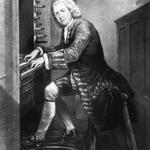
Johann Sebastian Bach

Wolfgang Amadeus Mozart
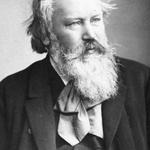
Johannes Brahms
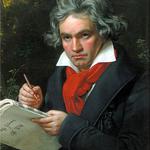
Ludwig van Beethoven
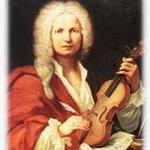
Antonio Vivaldi
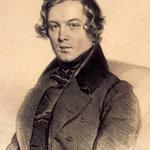
Robert Schumann

Richard Wagner
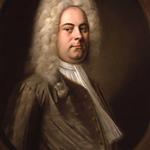
Georg Friedrich Händel
Franz Liszt Tour Cities
Frequently Asked Questions About Franz Liszt
Concerts & Tour Date Information
Is Franz Liszt on tour?
Yes, Franz Liszt is currently on tour. If you’re interested in attending an upcoming
Franz Liszt concert, make sure to grab your tickets in advance. The Franz Liszt tour
is scheduled for 1 dates across 1 cities. Get
information on all upcoming tour dates and tickets for 2024-2025 with Hypebot.
How many upcoming tour dates is Franz Liszt scheduled to play?
Franz Liszt is scheduled to play 1 shows between 2024-2025. Buy
concert tickets to a nearby show through Hypebot.
When does the Franz Liszt tour start?
Franz Liszt’s tour starts Feb 14, 2025 and ends on Feb 14, 2025.
They will play 1 cities; their most recent concert was held in
Amsterdam at Muziekgebouw aan 't IJ and their next upcoming concert
will be in at .
What venues is Franz Liszt performing at?
As part of the Franz Liszt tour, Franz Liszt is scheduled to play across the following
venues and cities:
2025 Tour Dates:
Feb 14 - Amsterdam,
NH @ Muziekgebouw aan 't IJ